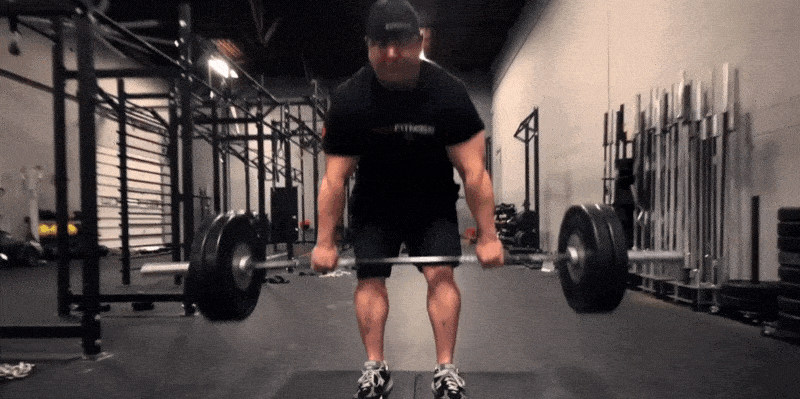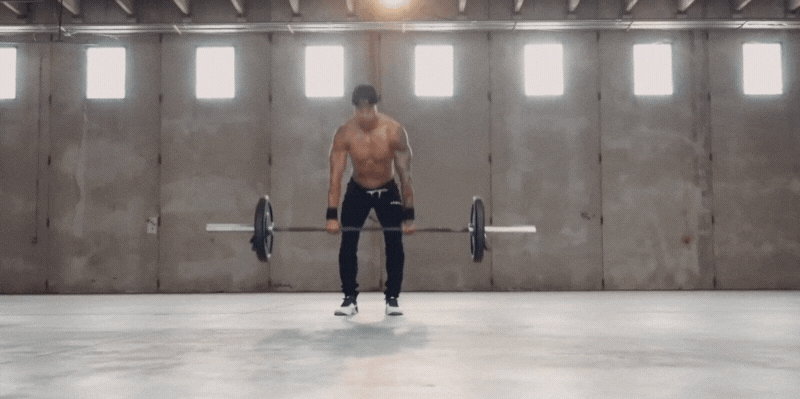The deadlift is one of the most fundamental and powerful exercises you can do. It’s a full-body lift that helps to strengthen your entire posterior chain, develop core strength and stability and increase overall power. But it can get a little boring with just the standard deadlift. That’s why we’ve put together a list of the top 5 deadlift variations and how to perform them correctly.
5 Best Deadlift Variations
1. Romanian Deadlift (RDL):

The Romanian Deadlift (RDL) is a great variation and it targets your posterior chain muscles. It’s an easy move that can be done with just a barbell and is an effective way to challenge your muscles and increase strength.
Instructions:
To perform the RDL, start with the barbell on the floor. Stand up straight and grip the barbell with an overhand grip, hands shoulder-width apart. Keeping your back straight and chest up, drive your hips backward as you lower the barbell down your shins. Keep going until the barbell almost touches the floor, then drive your hips forward as you stand up and lift the barbell back to starting position.
Pro Tip: Keep your arms straight and the barbell close to your body as you move.
2. Deficit Deadlift:

The Deficit Deadlift is an effective deadlift variation that helps to increase your range of motion and challenge your muscles in a new way. It requires a few extra inches of range than regular deadlifts and can help to build strength and power.
Instructions:
To set up the Deficit Deadlift, start by placing two small plates (or weight plates) under each end of the barbell. Stand on top of the plates and get into a deadlift position with an overhand grip, hands shoulder-width apart. Keeping your back straight, drive your hips backward as you lower the barbell down your shins. Once the bar comes close to the floor, drive your hips forward and stand up with the barbell.
Pro Tip: Start with light weights and focus on perfecting your form before moving on to heavier weights.
3. Sumo Deadlift:

The Sumo Deadlift is another great deadlift variation that challenges your muscles in a different way. It’s a wide stance variation that requires you to get a lot of hip and leg power, but it’s a great way to build total body strength.
Instructions:
To set up the Sumo Deadlift, stand with your feet wider than shoulder-width apart and point your toes outwards. Keeping your back straight, grip the barbell with an overhand grip and drive your hips backward as you lower the barbell down your shins. Once you reach the bottom of the movement, drive your hips forward as you stand up with the barbell.
Pro Tip: Make sure to keep your chest up and chest and back straight as you move.
4. Trap Bar Deadlift:

The Trap Bar deadlift is a great deadlift variation that uses a special type of barbell with handles on either side. It helps to increase strength and power while reducing the stress on your lower back.
Instructions:
To perform the Trap Bar deadlift, stand inside the trap bar and grip the handles with an overhand grip. Drive your hips backward as you lower the barbell down your shins, keeping your back straight and chest up. Once you reach the bottom of the movement, drive your hips forward and stand up with the barbell.
Pro Tip: Keep your arms straight and focus on driving through your heels as you stand up with the barbell.
5. Barbell Deadlift:

The Barbell deadlift is the classic deadlift that everyone should master. It’s a great exercise for overall strength and power and is a great way to build strength and muscle.
Instructions:
To perform the Barbell deadlift, stand in front of the barbell with an overhand grip, hands shoulder-width apart. Drive your hips backward as you lower the barbell down your shins, keeping your back straight and chest up. Once you reach the bottom of the movement, drive your hips forward and stand up with the barbell.
Pro Tip: Make sure to keep your arms straight and focus on driving through the heels as you stand up.
These are the top 5 deadlift variations and how to perform them. With perfect form, each of these exercises can help you build strength and power while reducing stress on your lower back. Have fun and be safe when performing these lifts!
Happy lifting!
FAQs
Which deadlift variation is the most effective?
The effectiveness of a deadlift variation depends on the individual’s goals and preferences. Some might find that one variation is better for building strength, while others might find that it is better for building power. Ultimately, the best variation for an individual will depend on their own fitness goals and body type. It is important to experiment with different deadlift variations and find the one that works best for you. Additionally, it is important to ensure that you are using the proper form and technique when performing any of the deadlift variations. With proper form and technique, any of the variations can be an effective way to build strength and power. Be sure to consult with a fitness professional before attempting any of these variations.
Are deadlifts, squats, press, and their variations enough to build an amazing body?
Deadlifts, squats, and presses are some of the most fundamental exercises for building an amazing body. However, these exercises alone are not enough to build an amazing body. To maximize results, it is important to have a well-rounded program that includes a variety of exercises.
I have knee osteoarthritis. Is there a variation of deadlifting which will not harm my knees?
Yes, there is a deadlift variation that can be beneficial for people with knee osteoarthritis. The Romanian Deadlift is a good option as it focuses on the hip hinge motion and works to strengthen the glutes, hamstrings, and lower back muscles. To perform this variation, stand with feet shoulder-width apart and keep a slight bend in the knees. Grip the barbell with an overhand grip, and hinge forward at the hips while keeping the back straight. Keep lowering until there is a stretch in the hamstrings and glutes, then drive through the heels to stand back up. This variation can help improve strength in the lower body without putting too much stress on the knees.
